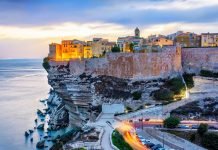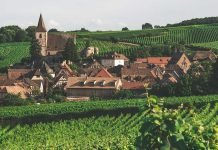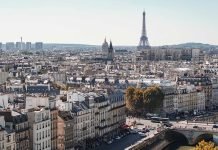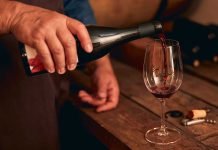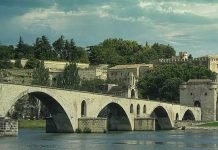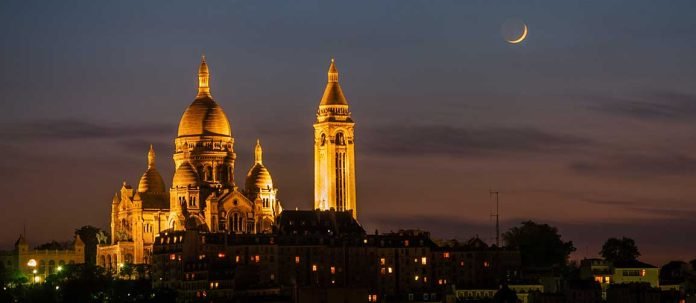Highlights of the Île-de-France Region
- Paris, the captivating capital city, often dubbed ‘the city of love’ and ‘the city of light’.
- World-renowned landmarks including the Eiffel Tower, Notre-Dame Cathedral, and the Louvre.
- Rich and diverse history dating back to the Roman era.
- Spectacular natural scenery with four regional nature parks.
- Picturesque towns like Versailles, Fontainebleau, and Chantilly.
- Culinary delights of traditional French cuisine and internationally acclaimed wines.
- Rich cultural offerings, from music and theatre to art galleries and festivals.
- Historical and architectural treasures, including castles, cathedrals, and manor houses.
- Diverse shopping experiences, from vintage markets to luxury boutiques.
- Extensive public transport network allowing easy exploration of the region.
The Allure of Paris: An Unforgettable Cityscape
As the heart of Île-de-France, Paris captivates with its irresistible charm, from the majestic Eiffel Tower and timeless Notre-Dame Cathedral to the bohemian streets of Montmartre. Its illustrious museums, such as the Louvre, home to the enigmatic Mona Lisa, and Musée d’Orsay, showcasing a stunning impressionist collection, offer a profound cultural experience. Lovers of literature can explore Shakespeare and Company, a historic English-language bookstore, while fashion enthusiasts find themselves in a city that has set global fashion trends for centuries.
Beyond Paris: The Historic Towns of Île-de-France
Beyond the capital’s bustle, the charm of Île-de-France truly blossoms in its historic towns, where the grandeur of past eras merges with the tranquility of the present.
Versailles: A Royal Retreat
Stepping into Versailles is like stepping into a history book, where each page is rich with tales of monarchy and revolution. The town’s centerpiece, the opulent Château de Versailles, was once the center of political power in France. Today, it serves as a museum and testament to the absolute monarchy of the Ancien Régime. The palace’s resplendent Hall of Mirrors and its vast Gardens designed by André Le Nôtre, complete with statues, fountains, and geometric flower beds, are not to be missed.
Not far from the Château, the royal city of Versailles continues to enchant with its quaint markets, charming bistros, and Saint-Louis Cathedral. From the historic district of Notre-Dame to the picturesque antique shops in the Quartier Saint-Louis, Versailles is a captivating escape from the modern city’s rush.
Fontainebleau: A Noble Sanctuary
Home to the exquisite Château de Fontainebleau, this town exudes a quiet nobility. The château, originally a medieval castle, was transformed into a Renaissance palace by King Francis I and later became a favorite residence of Napoleon Bonaparte. Each room of this UNESCO World Heritage site is a work of art, showcasing a blend of Renaissance and classical styles.
But the town is more than just its castle. The Forest of Fontainebleau, a former royal hunting park, is a paradise for nature lovers and rock climbers, with its unusual sandstone formations and numerous walking paths. The town’s center, with its pedestrian-friendly streets, elegant shops, and welcoming cafés, adds to the charm.
Chantilly: An Equestrian’s Eden
Chantilly is known worldwide for its horse culture. The town boasts the Great Stables, a majestic 18th-century building that houses the Living Museum of the Horse. This museum, the largest of its kind in the world, is a trove of equestrian artifacts and regularly hosts horse performances.
The Château de Chantilly, with its moat and grand estate, is a masterpiece housing the Condé Museum, which harbors a treasure trove of historical manuscripts and fine art. The surrounding park, designed in part by Versailles’ André Le Nôtre, presents varied landscapes, including an English garden, a French garden, and a rustic hamlet.
Provins: A Medieval Gem
Recognized as a UNESCO World Heritage site, Provins takes visitors on a journey back to the Middle Ages. This town, known for its well-preserved fortifications, includes a network of underground galleries and a 12th-century keep, the Cesar Tower. The annual Medieval Festival in June recreates the atmosphere of medieval trade fairs, complete with costume parades, jousting tournaments, and traditional crafts.
Whether it’s the royal splendor of Versailles, the noble elegance of Fontainebleau, the equestrian traditions of Chantilly, or the medieval heritage of Provins, the towns of Île-de-France offer diverse experiences that transport visitors back in time, enriching their understanding of France’s rich history and culture.
Natural Wonders: Parks and Preserves
The Île-de-France region offers a lush array of natural parks and preserves, a wonderful escape for those wanting to experience France’s natural beauty beyond its urban centers.
Vexin Français Park
Located northwest of Paris, the Vexin Français Park offers a slice of French countryside at its finest. A paradise for walkers and cyclists, the park’s extensive network of trails takes visitors through picturesque landscapes dotted with farmland, forests, and traditional stone villages. Discover the charming town of Auvers-sur-Oise, where Vincent Van Gogh spent his last days, or visit the historic Château de Théméricourt, which hosts the park’s museum.
Upper Chevreuse Valley Regional Natural Park
The Upper Chevreuse Valley Regional Natural Park is a blend of historical and natural wonders. Amid its green valleys, forests, and meandering rivers lie architectural treasures such as the Château de Breteuil and the Cistercian Port-Royal-des-Champs Abbey. Numerous marked trails allow for exploration of the park’s diverse flora and fauna. It’s a haven for photographers, bird watchers, and nature enthusiasts alike.
French Gâtinais Regional Nature Park
A landscape marked by the last ice age, the French Gâtinais Regional Nature Park features remarkable geological formations, including sandstone rock clusters used by climbers worldwide. This park is also known for its traditional honey production, and the Maison du Parc at Boutigny-sur-Essonne provides information on local craft traditions.
Oise-Pays de France Regional Nature Park
As the largest nature park in the region, Oise-Pays de France Park features a variety of landscapes from the ancient Forest of Ermenonville, known for its beautiful sand dunes, to the picturesque ponds of Commelles. Home to a diverse range of birds, the park is a popular spot for birdwatching. Its rich history is reflected in the numerous historic buildings, including the Royal Abbey of Chaalis, which houses a remarkable collection of art and relics.
Gastronomic Delights: Food and Wine
The gastronomy of Île-de-France is a delightful exploration of flavors and aromas, from savory classics to sweet delicacies and exquisite wines.
Classic French Dishes
The region is known for its rich, hearty fare. Classic dishes such as boeuf bourguignon, a slow-cooked beef stew in red wine, and coq au vin, chicken braised with wine, mushrooms, and garlic, are a testament to the region’s love for wine-infused dishes. Escargot, snails cooked in garlic-parsley butter, and foie gras, a delicacy made of duck or goose liver, reflect the sophistication of French cuisine.
Local Cheeses
Île-de-France is famous for its creamy, full-flavored Brie cheeses. Brie de Meaux, with its bloomy rind and nutty taste, and Brie de Melun, slightly stronger and saltier, are both AOP-designated cheeses, meaning they are made following strict traditional methods.
Wines and Pastries
In the Montmartre district, the last active vineyard in Paris produces Clos Montmartre, a rare wine that’s usually sold at auction for city charities. This adds a local touch to the region’s wine scene, traditionally dominated by wine from other French regions.
When it comes to sweet treats, Île-de-France shines with patisseries displaying alluring arrays of macarons, éclairs, and tarte tatins. And of course, there’s the iconic croissant, flaky and buttery, best enjoyed with a café au lait for breakfast.
Whether you’re a wine connoisseur, a cheese lover, or have a sweet tooth, the gastronomic journey in Île-de-France is sure to tantalize your palate and provide an unforgettable culinary experience.
Cultural Immersion: Churches, Castles, and Galleries
Numerous galleries and cultural institutions like the Centre Pompidou and Musée Rodin offer a deep dive into art and culture. Discover the region’s religious heritage by visiting the majestic Saint-Denis Basilica, the burial site of French Kings, and the Sainte-Chapelle, known for its stunning stained glass.
Sprinkled throughout the region, numerous châteaux such as Château de Malmaison and Château de Rambouillet reveal stories of past epochs, while the iconic Sacré-Coeur Basilica and the Gothic Notre-Dame Cathedral embody the region’s rich architectural history.
The Île-de-France region, with its blend of history, nature, culture, and gastronomy, offers something for every traveler. It’s not just a destination; it’s an experience that will leave an indelible mark on your heart.
Shopping Experiences: From Flea Markets to High-End Fashion
The shopping scene in Île-de-France caters to an array of tastes and preferences, from couture fashion to antique treasures, creating a spectrum of experiences that reflect the region’s blend of old and new, local and cosmopolitan.
Haute Couture and Luxury Shopping
Paris, globally renowned as a fashion capital, is the birthplace of haute couture. The city is home to iconic fashion houses such as Chanel, Louis Vuitton, and Dior, where one can witness fashion elevated to art. Shopping in Paris is a sensory journey, and the city’s famous shopping streets are as much about the experience as the purchases.
The Champs-Élysées, often described as ‘the world’s most beautiful avenue,’ is dotted with flagship stores, luxury boutiques, and famous brands. Faubourg Saint-Honoré is synonymous with luxury fashion and houses several high-end boutiques, while Boulevard Saint Germain in the chic Left Bank offers an array of designer shops and upmarket stores.
Antiques and Vintage Shopping
For those drawn to the charm of the old, the Saint-Ouen Flea Market, or ‘Les Puces de Saint-Ouen,’ is a paradise. One of the largest antique markets in the world, it spans over seven hectares and includes more than 2,000 stalls. Here, visitors can find everything from vintage clothes and furniture to antique jewelry and art. It’s a place where every object has a story, and bargaining is part of the fun.
Artisanal Crafts and Boutiques
Beyond high fashion and antiques, Île-de-France offers a wealth of boutiques and craft stores that celebrate French artisanship. Whether it’s bespoke perfumeries in the Marais, artisanal bakeries in Montmartre, independent bookstores in the Latin Quarter, or the myriad art galleries that dot the city, these spaces provide a chance to discover and support local artisans and creators.
The Captivating Festivals and Events
Festivals and events in Île-de-France offer immersive experiences that celebrate the region’s rich cultural heritage, artistic vibrancy, and community spirit.
Music and Cultural Festivals
The Festival de Saint-Denis is a summer highlight, turning the historic Basilica into a concert venue with performances from world-renowned orchestras and soloists. The Fête de la Musique, held annually on the summer solstice, transforms the city into a grand stage where both amateur and professional musicians perform in public spaces across the city.
The Nuit des Musées is an annual event where museums across Paris and the surrounding region open their doors for free until midnight. It’s a unique opportunity to see world-class exhibitions under the stars and attend special events and performances.
Film and Sporting Events
For film enthusiasts, Île-de-France hosts the French Film Festival, a platform for showcasing the best of French cinema, including works by emerging filmmakers. Screenings, Q&As, and workshops offer an in-depth exploration of French cinematic culture.
The Tour de France, the world’s most famous cycling race, often includes stages in the Île-de-France region. Watching the peloton whizzing through the beautiful French countryside or witnessing the grand finale on the Champs-Élysées is an exhilarating experience for sports fans.
These events, brimming with vitality and French flair, contribute to Île-de-France’s dynamic cultural landscape, offering exciting experiences for residents and visitors alike.
Accessing Île-de-France: The Transport Hub
One of the reasons Île-de-France is such a visitor-friendly region is its extensive transport network. The Paris Metro and RER trains make it easy to explore the city and its suburbs. The SNCF train network connects Paris to other major towns in the region, such as Versailles and Fontainebleau, making it straightforward for tourists to explore beyond the capital. Additionally, with Charles De Gaulle and Orly airports, the region is well-connected to international destinations.
Final Thoughts: A Symphony of Experiences
Île-de-France is more than just a tourist destination – it’s a tapestry of profound history, architectural marvels, natural beauty, culinary wonders, and cultural heritage. Whether you’re an urban explorer drawn to the vibrant life of Paris, a history buff seeking the stories of past eras, a nature lover looking for scenic landscapes, or a food and wine connoisseur aiming to tantalize your taste buds, Île-de-France has it all. It’s a region where every moment is steeped in charm and every corner hides a new discovery. Come and immerse yourself in this captivating symphony of experiences. Bon voyage!

